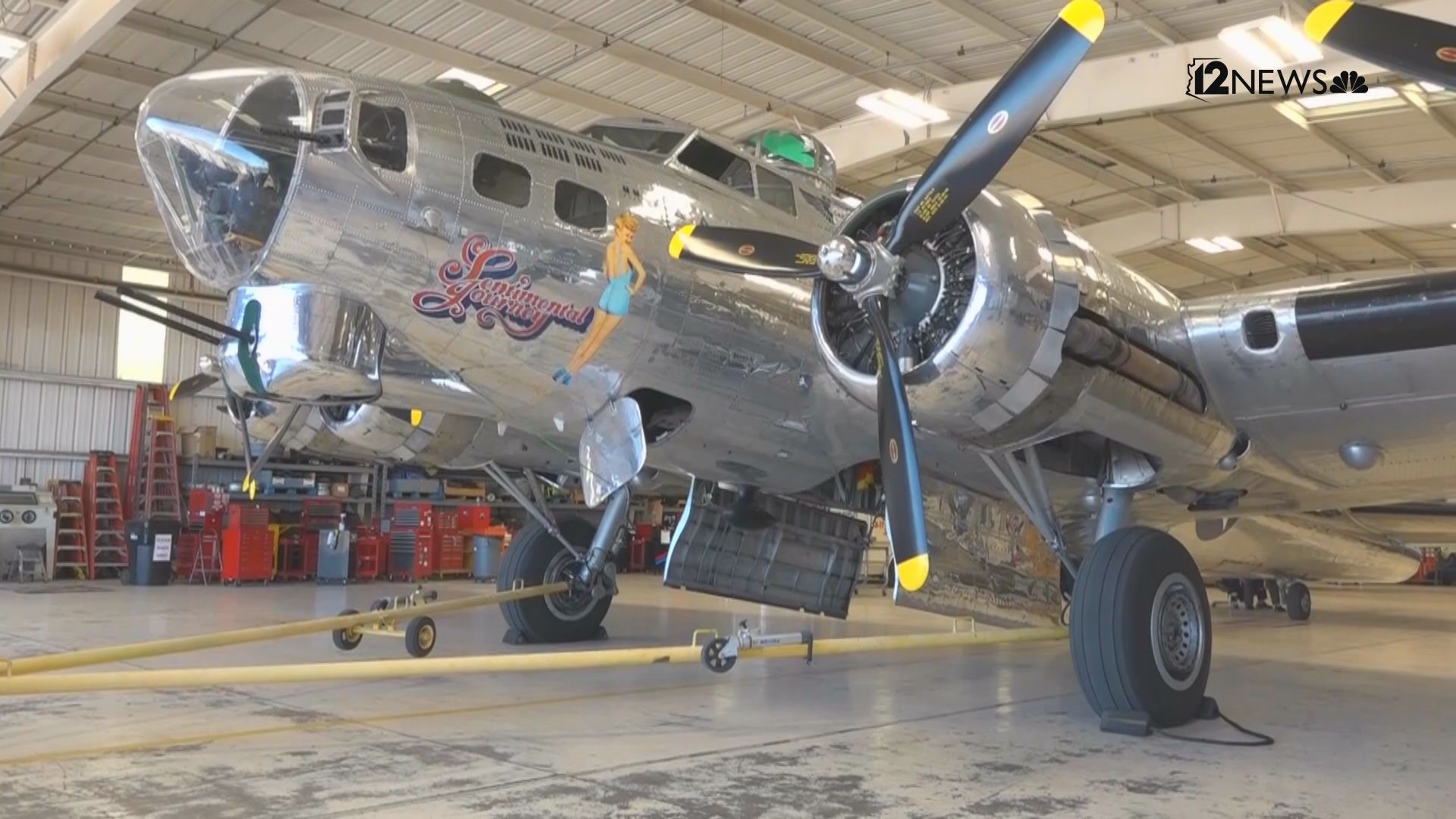MESA, Ariz. — In Mesa, there is a lady with an unusual name: Sentimental Journey.
Over her lifetime she’s had many jobs. She flew missions in World War II, navigates the skies multiple times a year and she’s a teacher.
Sentimental Journey is a B-17 Flying Fortress that was restored at the Airbase Arizona Flying Museum. Of the roughly 13,000 manufactured during the war, she’s one of four in the country that is still flying.
“They are the ones that massed enormous bombing raids in Europe. They also served in the Pacific area,” according to Bobbie Carleton, a volunteer historian at the Airbase Arizona Flying Museum in Mesa.
Sentimental Journey is a key exhibit at the museum, and she travels to communities across the country with the Commemorative Air Force.
On one of those trips to Tennessee, Dr. Tiffany Saul, a research assistant professor at Middle Tennessee State University (MTSU), got to tour the B-17. During the tour, she met members of the Commemorative Air Force who offered to let her forensic anthropology students study the plane.
“Because they aren’t flying to our part of the country this year, they extended an invitation to us to come out,” said Saul.
RELATED: Those Who Serve: Valley organization honors Gold Star family with flight in vintage aircraft
Recently, a group of forensic anthropology students from MTSU got to visit the WWII heavy bomber. They got an up-close and personal view of the plane ahead of their trip to France where they will be excavating a WWII B-17 crash site in partnership with the Defense POW/MIA Accounting Agency (DPAA).
“What the Commemorative Air Force is doing is really unique in that you get to have a tactical experience,” said Saul. “It’s invaluable to the students to be able to explore the aircraft, touch the aircraft.”
Because the crash site is nearly 80 years old, the plane will likely be in many small pieces. The visit gives the students the opportunity to memorize the small, metal parts of the plane in order to properly identify and orient any pieces of the plane they’ll find in the field.
“Our goal is to recover evidence that links the crash to those individuals, as well as the remains of those individuals and any personal effects that they may have had on them,” said Dr. Adam Fracchia, an assistant research professor at the University of Maryland and the chief archaeologist of the excavation.
Not only are the students getting hands-on experience, but the excavation also comes with a sense of purpose. The group is hoping to bring closure to families of service members that are still missing from WW II.
“Our students are not just learning, they’re also providing a service to the surviving family members, to our country as a whole,” said Saul.
More than 70 years after the end of the war, there are more than 21,000 Americans missing in Europe. For these students and educators, the mission allows them to use their scientific knowledge in a meaningful way.
“It’s really important to be able to get closure as to what happened to your family members,” said Audrey Lauerhass, a MTSU student going on the mission to France. “That’s one of the things that drew me to forensic anthropology in the first place was to be able to help people be able to grieve their lost family members, to know what happened to them and be able to have closure.”
Those Who Serve
12 News is honoring the brave people who are currently serving and have served in the United States's armed forces. Subscribe to our YouTube channel for more of their stories.

